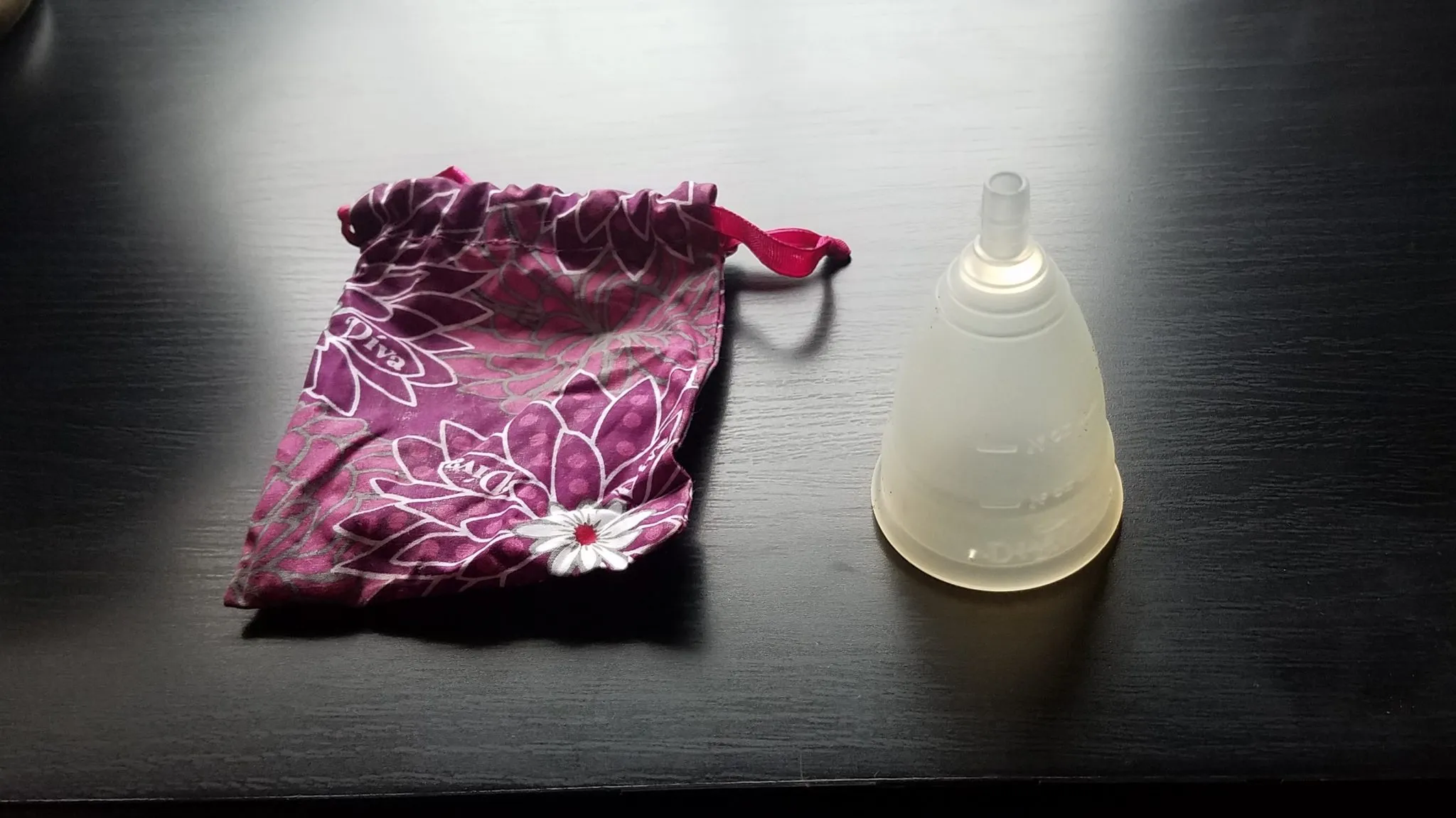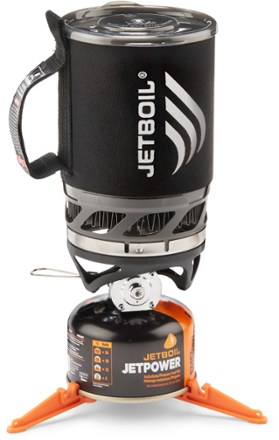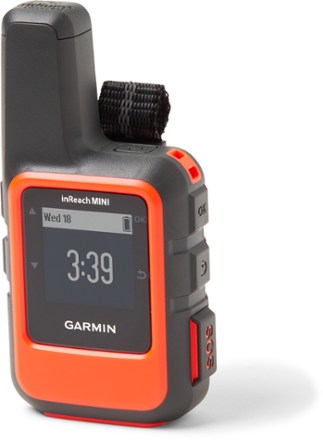If you hang around with adventurous ladies, it’s only a matter of time before you’ll hear about menstrual cups.
When it comes to camping, backpacking, and adventurous travel – activities where you might not see a flush toilet or even a garbage bin for days – the typical tampons and pads just don’t cut it.
I first heard of the mysterious-sounding Diva Cup from a woman on the John Muir Trail, a more experienced backpacker sharing words of wisdom with a newbie. It soon came up again in a conversation about Burning Man, the multifaceted leave-no-trace festival in the desert.
I got the message: menstrual cups are the period management tool of choice for many adventurous outdoorsy ladies who don’t want to haul a large supply of feminine hygiene products into – and worse, out of – the wild places where they adventure.
So, in my neverending quest to be an adventurous outdoorsy lady, naturally I had to try one.
How did it go, you ask?
That’s a personal question, but I’ll answer it – and a lot of others throughout this post – anyway. It went so well that I haven’t used anything else since! I originally bought my menstrual cup for backpacking and camping, but I now use it at home, on the road while traveling, and everywhere else too.
Of course everyone is different, and the only way to know if you’ll like a menstrual cup is to try one yourself. I once met a woman who had bicycled from Canada to South America – totally badass – who tried one and didn’t like it. But honestly, she is the only woman I’ve heard this from. Everyone else I’ve talked to is a huge fan, and I am too.
In this post I’ll explain how to use a menstrual cup for backpacking, bikepacking, and camping (don’t worry, it’s pretty easy). I’ll also give you all my best (and kinda personal) tips on how to use it, especially in outdoor situations without easy access to running water.
Whether you want to use a menstrual cup for travel, hiking, camping, swimming, biking, or sitting at home watching Netflix, it can really be a game changer for that time of the month!
Pros of Menstrual Cups
- Smaller and easier to pack than a large supply of disposable tampons and pads, for example if you’re on a long thru-hike or traveling in countries where the feminine hygiene products are hard to find
- Cheaper than disposable products if used long-term
- No waste to dispose of or pack out
- More environmentally friendly than disposable products
- Can be worn for longer (up to 12 hours) than tampons
- Very leak-proof if used correctly, even during active sports
- Feels very clean while you’re wearing it; all the liquid stays inside until you empty the cup
- Easier to see how much liquid you’re dealing with, which is useful if you’re trying to get a sense of your monthly flow for any reason (I find that a sudden change in the volume or length of my period is a sign my body is stressed).
- Can comfortably be worn even at very beginning and end of your period, when there is little or no flow, unlike tampons.
Cons of Menstrual Cups
- A bit more invasive to put in and take out; you’ll need to be comfortable getting your fingers all up in there.
- Therefore, you’ll need a way to clean your hands both before putting it in and after taking it out.
- You’ll need water to clean it (though this is not as hard as I first imagined, more on this below).
- Potentially easy to drop into the toilet while inserting/removing if you’re not careful. No, this hasn’t happened to me yet, but I live in constant fear, especially when using outhouses and pit toilets.
Based on those pros and cons, if you’re comfortable with your body and can handle some basic cleaning, there’s really no reason not to try a menstrual cup.
Using a Menstrual Cup for Camping
Menstrual cups are great for camping. Even if you’re at an established campsite with a toilet, it’s nice to not worry about when and where to change your tampon or pad. Some campsites don’t have garbage bins, and it’s nicer to not worry about packing out used hygiene products.
One word of caution: if using a menstrual cup while camping at a site with a pit toilet, be extra careful taking it out! Be sure you’ve practiced at home first so you don’t risk dropping it into the toilet.
Using a Menstrual Cup for Backpacking
Menstrual cups are perfect for backpacking. Especially on a long thru hike, you definitely don’t want to be packing tampons or pads in…. and packing them out again after they’re used. A menstrual cup is lightweight, simple, can be used for as long as you need it; no worries about running out of supplies.
Some backpackers worry that without running water, they won’t be able to clean their hands and cup well enough. It’s actually not that big of a deal, and I’ll go over this in more detail below.
Using a Menstrual Cup for Travel
Using a menstrual cup for travel is really convenient, especially in parts of the world where it’s difficult to find western-style feminine hygiene products. If you’re on a long trip, you don’t want to haul months’ worth of supplies around in your suitcase or backpack. Instead, just pack a single menstrual cup and you’re covered for as long as you’ll be on the road.
The other nice benefit of using a menstrual cup for travel: they can be left in longer than tampons. This really comes in handy on those long-haul bus rides and trans-oceanic flights.
Using a Menstrual Cup for Bikepacking
Bikepacking – kind of like a cross between backpacking and travel, but via bicycle – is one of my favorite ways to explore. Sometimes it’s remote and wild, like a wilderness expedition, and other times it’s more like a slow (very slow) form of travel through an unfamiliar country.
In either case, a menstrual cup is perfect for bikepacking. Long days with no bathrooms, carrying supplies on your bike for months, traveling in countries without western-style feminine hygiene products… Not to mention that pads and chamois bike shorts don’t mix very well. I’ve ridden many thousands of miles with my Diva Cup and definitely recommend it to other lady cyclists.
One issue that’s particular to cycling: sometimes the stem of the cup can be uncomfortable when sitting on a bike seat. The fix: trim the stem to make it a bit shorter.
Which menstrual cup is best?
There are a lot of options out there: Diva, Dutchess, Lunette, Pixie, Lena…
I think which one works best is largely an individual preference; we’re all a bit different down there. I started with a Diva Cup and have stayed with it because it doesn’t leak for me.
I tried a Dutchess cup briefly, when I wanted a backup for a long trip. I found that it was slightly lighter and more flexible, which was nice, but for me it leaked too much and I never figured out how to stop it. I went back to the Diva Cup and have stuck with it ever since. I haven’t tried the other brands, but obviously they work for some women or they wouldn’t be so popular.
Keep in mind that many brands come in multiple sizes. Diva Cup comes in two sizes:
- Diva Cup Model 1 for women “under 30 who have never delivered vaginally or by caesarean section”
- Diva Cup Model 2 for women “age 30 and over and/or those who have delivered vaginally or by caesarean section regardless of age”
These are obviously just guidelines and everyone is different. It’s not like my model 1 spontaneously stopped working the day I turned 30. It’s been a few years and maybe I should update to a model 2, but well, I guess it makes me feel young.
Important Tips for Success
If you only read one more section, make it this one. Here are my top short-and-sweet tips for having a successful transition to menstrual cups:
- Learn to put it in properly (see below).
- Give yourself a month or two to get used to it, before you try to deal with it in the wilderness or while traveling.
- Trim the stem if it’s uncomfortable.
- Do your best to keep everything clean, but don’t stress if you can’t clean it with soap and running water every time.
Common questions
Ok, here’s where it gets personal.
How do I make the switch?
Switching to a Diva Cup isn’t too hard. Just buy one and next time your period comes around, try putting it in. Until you know you’re using it right, I’d suggest wearing it in combination with a pad or light pantyliner.
If you’re switching in preparation for a big trip, buy your menstrual cup early and start using it a few months in advance. It’s super easy to use once you get used to it, but it does take a few tries to get it right at first (at least it did for me).
Is a menstrual cup hard to put in and take out?
Your menstrual cup will come with good instructions for this part, and generally no, it’s not too hard.
The basic procedure is to find a comfy relaxed position (probably sitting on the toilet at first, but once you get good at it standing works fine), fold part of the cup’s rim inward to make it smaller, and then, well, shove it up in there.
After that it’s important to twist it a bit to make sure the folded rim pops open and forms a leak-proof seal. It will sit lower than a tampon, close to your vaginal opening, which might take getting used to but is totally normal.
Taking it out is similar, you basically just reach inside and grab the stem or bottom of the cup and remove with a gentle pulling and twisting motion, using one finger to push the rim in to make things more comfortable.
I’d encourage you to not worry too much about this part. Once you have the cup and instructions in hand, it will be much clearer.
Can a menstrual cup get stuck?
I understand the worry, but after using one I feel strongly that this would be really, really unlikely. Probably impossible. It sits low and is not going to fit through your cervix and “get lost.”
Occasionally in the morning I find that it has moved a bit higher overnight and I can’t feel the stem where it normally is. In this case clenching my muscles, as if I am trying to push outward (think trying to go number 2), will usually bring the stem down to where it’s easy to grab. If not, it’s really just a short distance up inside, no big deal.
Is a menstrual cup comfortable?
In general, yes, it’s as comfortable as a tampon, possibly more so.
Some women find the stem a bit irritating. I’ve experienced this only during long days of bicycle touring, and it’s not fun. On a Diva Cup and probably some other brands, the stem is meant to be trimmed if it’s too long for you. Be sure to try this before deciding your menstrual cup isn’t comfortable enough.
How do I empty a menstrual cup while backpacking?
Emptying a diva cup while backpacking – when there’s no toilet around – isn’t any harder than taking care of other bathroom needs in the wilderness.
First, find a hidden spot. Dig a cat hole at least 6 inches deep, the same way you would for pooping in the woods.
Then, clean your hands. This doesn’t necessarily need to be perfect, though dirty hands can pose a risk of infection. I usually rinse mine with some water or possibly use a few drops of hand sanitizer.
Using your clean hands, remove the cup from your body and empty the contents into the cat hole.
Clean the menstrual cup as well as possible (see below). Sometimes, if you’re in the backcountry, this means just rinsing it out with some water.
Reinsert, rinse your hands again, and you’re good to go! Don’t forget to put the dirt back into the cat hole.
You don’t really need any toilet paper for this process, but if you prefer to use some, pack it out in a plastic baggie so it doesn’t become disgusting litter (it doesn’t actually biodegrade as fast as many people think).
How do I keep my menstrual cup clean?
This was my biggest concern, given that I planned to use it often in places without running water, but it turned out to be easier than I expected.
First, the recommended method: Wash your hands with soap and warm water. Remove the cup, empty it into the toilet, wash it out with soap and clean water, and reinsert it. Wash hands with soap and warm water again.
Now, what about all the real-life situations where you have no running water, no soap, and possibly even no toilet? Or you’re in a public restroom and the sinks are outside the stalls?
Now, I do not recommend ignoring manufacturer recommendations. Cleanliness is important; no one likes infections. But let me be real with you about my personal experience:
- You do need clean hands, but hand sanitizer works if you don’t have access to water and soap.
- You don’t need warm running water. A couple squirts with a water bottle (these nifty collapsible ones take up almost no space when empty), and/or wiping out with toilet paper, will work in a pinch. Worst-case scenario, just empty and reinsert if you don’t have any other options.
- That said, to minimize risk of infection you should give it a good clean as often as possible, at least every few days.
- If you’re in the backcountry with no toilet, dig a hole to empty your cup into, just like you do with solid waste (and pack out any toilet paper!).
After returning from a trip or at the end of my period, I drop my Diva Cup in a pot of boiling water for a couple minutes to make sure it’s good and clean. Just make sure there’s plenty of water in the pot or you can damage the silicone if the water boils away and leaves the cup sitting directly against the hot metal.
Do I need to wear a pad with a menstrual cup?
Once you get good at inserting it, you can probably just wear the cup alone. If you have occasional problems with leaks or just want the extra peace of mind, a pad can still be helpful.
I often wear a thin pantyliner on the first day or two of my period, to make sure I’ve got my Diva Cup inserted correctly and also to catch anything that was already on its way out when I first inserted the cup. After that, I go without. And if I’m on the road/trail I’ll often take my chances and skip this part.
How long can I wear a Diva Cup for?
The Diva Cup instructions recommend no longer than 12 hours. This is already a nice increase over tampons, and unlike pads it doesn’t get progressively grosser the longer you wait.
Here is some personal experience: I have worn mine for 24 hours with no issues. Am I recommending this? Definitely not. I assume Diva Cup has a reason for recommending 12 hours and I can’t tell you it’s safe to ignore that.
However, there have been times when I’m freezing cold, my hands are numb, and I just need to crawl into my sleeping bag and deal with my Diva Cup in the morning. So far so good.
Do I need the accessories?
There are plenty of accessories to go along with menstrual cups. There’s Diva Wash, nifty collapsible cleaning cups, and even these sterilizer thingies.
I know many women appreciate these, but personally I don’t use any. I wash my cup with a mild soap and warm water whenever possible, though I don’t stress if that’s not possible for a day or two. After a long trip or at the end of my period I sterilize it in boiling water for a few minutes.
How often do I need to buy a new one?
Not very often! The clear silicone of the Diva Cup becomes stained after awhile, but that doesn’t make it any less functional. I have yet to wear one out.
I am, however, terribly afraid that I will accidentally drop it into a toilet while trying to remove it. This seems especially likely while squatting over a pit toilet in the dark, on tired legs, while swatting away malarial mosquitoes. For this reason, I own a backup and sometimes bring it on long trips.
Where do I buy a Diva Cup?
Like nearly everything these days, I got mine on Amazon. They have a huge selection of different brands, sizes, accessories, buyer reviews, and usually the best prices. If you’re feeling ready to give it a try, here’s an easy link:
More Resources for Adventurous Women
Since you seem to be into travel and/or outdoor adventure, you might also like these:


Outdoor travel resources in your inbox?
There’s more where this came from! If you love outdoor adventures in beautiful places, sign up here for occasional emails with my best tips and inspiration.


Share the Adventure
If you found this article helpful, please consider sharing so more people can benefit from it:































thank you for being so open and sharing. i was really curious about the diva cup but no one i know has ever tried one. I am going to and think all women should start using them, feminine hygiene products have to be high on the pollution list, no one is telling us that but seriously – common sense… And what did women use before pads and tampons (or rags- had to be very gross, messy) or women in 3rd world countries?
anyways thanks again.
Laura
Thanks for your comment and good points! I hope it works out well for you if you try it.
Hi,
Loved reading your article, I think the cup is amazing!
Just left with one question. I’ve been using a menstrual cup for a while already at home but at the moment I’m backpacking for several months, Before using the cup you need to boil it, but I’m only staying at hostels without a kitchen I can use. How do I prepare it for first use, when I don’t have a place to boil it? Because right now I’m stuck with using tampons……
Hi and sorry for the delay, this is probably too late to be useful for you. Did you find a solution? If it were me I would probably just wash it really thoroughly with soap and hot water.
Unscented soap and warm water is generally fine. Some brands are also OK with you using rubbing alcohol to disinfect the first time. I honestly only boil my cup once in a while, otherwise water is fine for my sensibilities. Think about the other things we put inside vaginas all the time (penises and fingers) that are certainly not boiled or sanitized first.
I’ve had my Diva Cup for almost a decade now! I only rinse mine throughout my period days (maybe I read somewhere that soap can degrade silicon?) and always wash/sanitize my hands before taking it out. When my cycle is finished I soak the cup in hydrogen peroxide overnight— helps with odor and staining and I’ve never had any health issues. On a multi-cycle hike I’d opt for a minimal amount of washing with castille soap and sun-drying whenever possible.
For whatever reason I tend to not have much luck with the style and shape of the standard Diva cup style, and that particular one is a bit uncomfortable for me being such stiff silicone. However!!! There are different shapes that work with different bodies and different (densities? Flexibilities?) of silicone out there (although it looks more intimidating than the “normal” shape, I’ve loved the Femmy Cycle since I’ve tried it-no stem, and the loop ant the bottom works much better for me than a stem.) If the Diva cup shape isn’t working for you, you have options to try until you find one that is comfortable for you!
Great advice and recommendation, thank you for sharing.
I could not get the menstrual cup to work for me. I read that for those of us who were never tampon users, the better bet is a menstrual disc, so I tried that and found them much easier to get started with.
Interesting, thanks for sharing. I’m sure that’ll be helpful to others.
I have also on occasion left my cup in for long periods of time without a problem, but the reason it is not recommended is the same than for tampons, it increases the risk of developing Toxic Shock Syndrome. It can be very serious, even fatal though it is rare, so best to be safe!
Anyway, I just discovered your blog and love it! I absolutely love how you just say it like it is, not shying away from talking about vulva instead of “lady parts”, and how pee isn’t actually dirty. Awesome resource, thank you 🙂
I wanted to thank you so much for inspiring me to take the leap and try bringing my cup and cloth pads on a weekend camping trip, coincidentally over the start of my period. So we had always had boiling water either for washing or making tea and coffee. Got the collapsible wash cup for the menstrual cup. So i could wash it somewhat on the John, and then boil it back at camp. Also I recommend anyone, to bring at least two. otherwise you are constantly adjusting it….at least the first day or two. and that’s never fun. If you bring extra’s, it helps with the changing process. Also bring cloth pads, or something you prefer, just in case of leaks here and there.